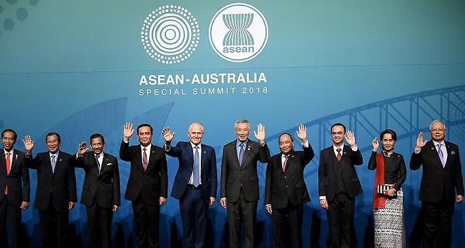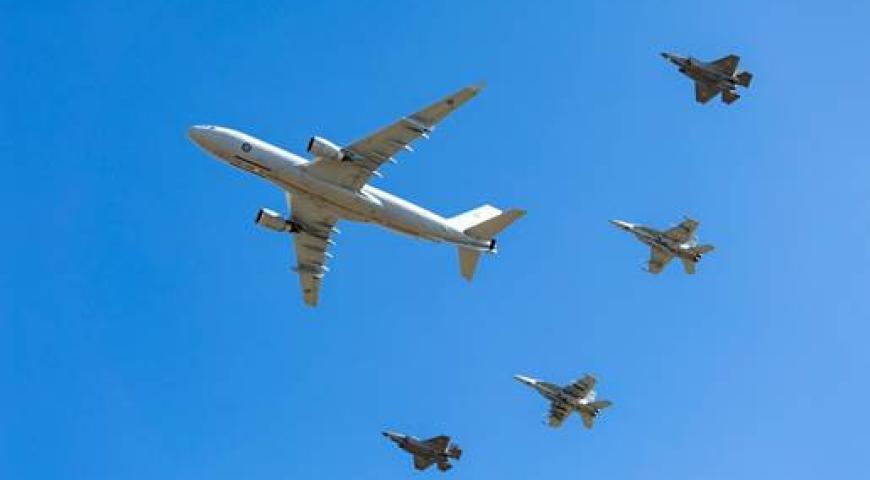Photo courtesy SBS Australia from the first ASEAN-Australia Special Summit, 2018
ASEAN appears to have greater economic than security-related influences, and the Australia-ASEAN relationship has grown in recent years to pose one of two options for Australia’s future: Australia can join ASEAN as a member or partnership, with New Zealand possibly joining a similar case of partnership. Last year’s special ASEAN-Australia Summit in Sydney highlighted the dialogue’s main points and respected Australia’s place as the first non-ASEAN country to initiate Dialogue Partner relations. South Korea has also gained significant partnership status with ASEAN, recently celebrating the 11th anniversary of the ASEAN-Korea centre in downtown Seoul.
Only eight other nation groups have Dialogue Partner relations with ASEAN and some articles examine the two-way benefits, risks and relations between one of these parties and the ASEAN organisation. Some articles also analyse the triangular relationship between two non-ASEAN nations and ASEAN, such as this US-ROK-ASEAN article. Therefore, we should consider Australia’s place with the Republic of Korea and ASEAN as both a bilateral link with South Korea, and both nations’ ties with ASEAN: both are middle-nations that neighbour ASEAN nations with significant trade, education and military ties. Discounting great powers from the list of dialogue partners, including the EU, only Australia, New Zealand and the ROK remain - as mentioned in Graeme Dobell’s ASPI article, New Zealand will most likely follow Australia’s interests.
As middle powers, MIKTA may be the appropriate forum for Australian-Korean relations with ASEAN, but this is an unequal forum for focusing on South East Asia: Turkey and Mexico are also engaging with ASEAN but not with the same status afforded to Australia and the ROK – both are advanced economies according to the IMF, and possessing significantly more interest in South-East Asia than their MIKTA counterparts.
ASEAN lacks the momentum of other cooperatives and faces challenges due to its own expansion. Critics argue that it duplicates some regional efforts already available in other mechanisms, while advocates recognise that ASEAN, in staying together as China rose over the last few decades, has been remarkable in itself.
| Australia | Republic of Korea | |
|---|---|---|
| ASEAN Students at universities | 105,000 (2017) | 33,869 (20117) |
| 2017 bilateral trade with ASEAN |
12% of Australia's exports, 16% of Australia's imports, $105 billion USD in two way trade |
$149 billion USD (10% of total import, export) |
| Visitors to ASEAN | 4 million (2012) | 5.99 million |
| Visitors from ASEAN | 1.4 million | 1.56 million (2012) |
The ASEAN market has given both Australia and South Korea unprecedented economic growth and a stable exchange for international students and tourists.
Like South Korea, Australia enjoys access via the East Asia Summit (EAS) and ASEAN Regional Forum – the latter of which Australia is a founding member. Neither country needs to choose between the giants of China or the United States: but the South China Sea is the main issue showing ASEAN’s growing rifts.
China’s presence with ASEAN has contributed to more ASEAN fractures than the unity once supposed – Singapore has heralded China’s interest with growing ties, including a bilateral military exercise scheduled for this year, even though other ASEAN members oppose this. Singapore’s Prime Minister, Lee Hsien Loong, remarked that “if the global economy pulls apart into different blocs…then ASEAN will be put in a difficult position” – a choice between the USA or China.
Australia seems less hesitant to make the “two friends, one ally” call, as former Secretary of Defence Dennis Richardson mentioned. South Korea, having returned to normalcy of relations with China, is still strongly embedded with the US alliance that has dominated its foreign policy as a Republic. Therefore, whilst ASEAN is mixed about a rising China, it seems that the middle nations – Australia and Korea, are not undecided and have a role to keep ASEAN focused on its original priorities.
The Regional Comprehensive Economic Partnership (RCEP) is only one mechanism that both nations will enjoy with ASEAN and, regardless of this implementation, I suggest that Australia and the Republic of Korea should remain firm on two ASEAN commitments that will only require more work in the future: combatting crime and working together on humanitarian assistance activities.
Both nations are increasing funding to supporting ASEAN to fight transnational crime – in particular, human trafficking. Additionally, both nations have also demonstrated a capability in supporting humanitarian activities in ASEAN countries through as the Sulawesi Tsunami aftermath in Indonesia last year.
Such joint efforts demonstrate the “middle power magic” – Australia and South Korea are able to transcend the usual issues of great powers appearing to flaunt their ambitions, while meaningfully contributing to a more stable and peaceful Asia-Pacific region. Such efforts exemplify the motto of ASEAN 2025 – “Forging Ahead Together” because while neither Australia or the ROK need to deviate from their US-centric foreign policy, their demonstrated interest in ASEAN is a welcome intermediary between China and the United States.
Not surprisingly, this fusion of interests, similar to Obama’s “Pacific Pivot”, ensures that both middle powers have an irreversible educational, cultural and political exchange with their ASEAN counterparts – and hopefully, other powers will follow suit.
Please let us know if you have discovered an issue with the content on this page.
Comments
Start the conversation by sharing your thoughts! Please login to comment. If you don't yet have an account registration is quick and easy.




